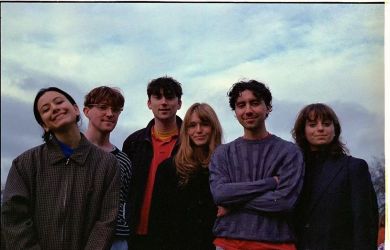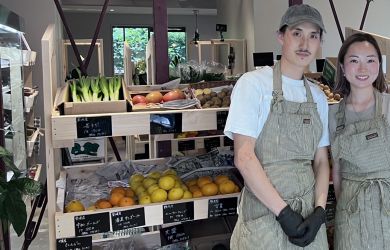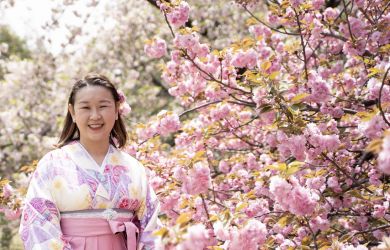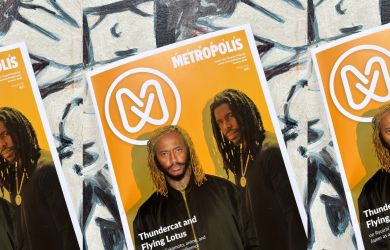
Originally published on metropolis.co.jp on April 2012

You teach drumming at several locations in and around Tokyo. Why did you choose to learn this traditional form of Japanese percussion?
Actually, I first learned to play the piano. It was only when I entered university that I made my transition to drumming. I found it was the perfect marriage of music and sports—my other passion—because of its physicality. I later added Western percussion to my noise-making arsenal.
What makes taiko drumming so special?
Taiko has both a musical side and an athletic side, which makes it both beautiful and powerful. That’s why I called my school Miyabi Arashi, which means “elegant storm.” Taiko also requires a lot of concentration—like martial arts—and teamwork. Yet, despite all the movement involved, this is something you can do even when you get old. My taiko master, for instance, is now 77 years old and he still plays better and faster than all of his students.
Since 1997 you have been running Miyabi Arashi Taiko School. Why did you decide to teach taiko?
I wanted to spread the understanding and enjoyment of Japanese music and culture while enhancing communication between the local and foreign communities. My students are able to interact on an equal level and learn more about each other.
So, all your classes are bilingual and open to any nationality. How come you speak English so well?
I lived abroad for many years, first studying music in the Netherlands, and then teaching Japanese in the United States.
Taiko drumming looks quite complicated. Also, traditional Japanese arts teachers seem to be very strict and conservative. Do your foreign students have any problems adjusting to this kind of situation?
Taiko is actually easier than you think. It’s amazing how quickly and easily your body remembers the beat patterns for you. As for taiko classes, it’s true that many of them are as strict as a martial arts dojo. But my classes are much more relaxed and we laugh a lot. At the same time, I always make a point to teach my students—especially children—a respectful approach to taiko. Nowadays taiko drumming has become like an art form, but in the old time it was deeply rooted in community life. My style in particular comes from Tohoku, an important farming and fishing area. The Japanese drumming style comes from the movements performed by the farmers, keeping their hip low and spreading the seeds around a big area with their hands. Also, the front-and-back movements come from fishing. The players are like the fishers who line up along the edge of the boat, casting their big nets into the sea and then pulling it back through a collective effort.
Where is your school located?
Actually, you could call Miyabi Arashi a “movable school.” I currently teach 23 weekly classes around Tokyo, at such places as the American School in Japan, the Nishimachi International School in Moto Azabu, the Tokyo American Club, and the British School in Tokyo, which is located in Shibuya.
For information on Moko Igarashi’s classes, email stormy@shore.ocn.ne.jp or call (03) 5442-3368.





